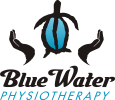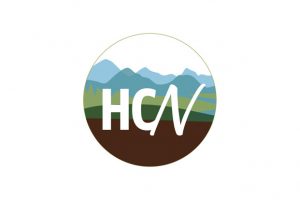HISTORY OF THE CORE
In the early 1990’s a group of Australian researchers (Richardson, Jull, et al) created quite a stir after publishing research about a group of deep trunk muscles that begin to work (milliseconds) before we produce voluntary movement. Prior to this news we thought the body only reacted to movement, not anticipated it. This group of deep muscles became known as “The Core” and rose to fame.
Normally the core muscles work together to create stability around the lower trunk and pelvis. The researchers noticed that in people with hip and back pain these “core” muscles weren’t turning on the way they were supposed to. Some were not turning on at all, some were working too strongly, and some were turning on or off at the wrong time. The resulting stability was insufficient to control even simple leg or trunk movements.
The researchers became curious about what would happen to the back and hip pain if the muscles could be taught to work properly again. Incredibly, everyone’s back and hip pain went away. At a one year follow up almost no one’s symptoms had returned and this was unheard of. They knew they were on to something.
Unfortunately the results weren’t broadly reproducible. In short, the muscle re-training was really hard to learn, it wasn’t fixing underlying source problems, and it wasn’t holding up to real life movements.
Excitement around training the core faded. Body workers and health care professionals moved on to other promising ideas. The researchers went back to researching to find missing pieces. And the fitness industry morphed the idea of deep trunk muscles creating stability into strengthening superficial trunk muscles and pre-tightening the pelvic floor as a stability strategy, and proceeded to generate a million fitness classes with core in the name but not in the exercises.
And several decades went bye.
In that time we’ve learned a lot more about the core. It’s an extremely important idea, and our understanding is incomplete but growing. Here’s an update, and a few useful things to know.
First, the morphed ideas about core and stability have had some disastrous effects. Clinicians have seen significant increases of urinary incontinence, hiatal hernias, prolapsed bladders and uteruses, constipation, digestive issues, pelvic floor problems, hemorrhoids, and a host of other unpleasant things. That is a terrible price to pay for learning that with a dysfunctional core, exercising with intensity creates high intra-abdominal pressures, and this can have severe consequences.
Yet using our bodies under all manner of loads is exactly what we need them to do. The error has been to build our stability strategies around rigidity and locking when we actually require them to be flexible and instantaneously adaptable.
Second, instead of one core, modern practices now speak of two. The first is the original deep group of muscles, now called the anticipatory core because they begin to work before we generate movement. The second core uses the big skeletal muscles of the trunk, pelvis, and thighs working in specific combinations to create stability. This is called the reactive core as this system reacts to what the body is doing and the forces acting on it. We need both systems, and we need them both to work well.
Third, the core is fascinatingly interwoven with breathing, and alignment. You can’t make changes in one without creating changes in the other two.
Most importantly know this: We can not produce normal movement if the anticipatory core isn’t working properly. It does not appear possible to exercise your way out of anticipatory core problems like you can with reactive core problems. Putting high loads and high velocity motions through a system unable to stabilize is asking for trouble.
Sources of anticipatory core problems are usually trauma based and complex. They often involve restricted mobility of visceral organs and their membranes. This anatomy has vagal nerve innervation and therefore substantial emotional components are possible. Solutions will be unique for each of us and related to our unique anatomy and trauma histories.
We generally need help to sort these problems out. Frequently a team is needed. Expect it to take more time, effort, and money than you think. Osteopaths, Physios, Massage therapists, Chiropractors, Psychologists, and Traditional Chinese Medicine practitioners are all potentially helpful. Be aware that not all practitioners have the skills to work with organs and deep membranes. Look for excellence when choosing a practitioner. It matters less what someone’s original training was and more how skilled they are.
The payoff is enormous if you can restore your core to good working order. You’ll move well late into life. You’ll have more enjoyment from activity and your participation or activity choices won’t be restricted from a fear of painful consequences. And if you start early enough you may not be on a surgical wait list for a hip or knee replacement.
Jeff Harvie – Physiotherapist
BlueWater Physiotherapy
Redwood Meadows, Alberta
Bluewaterphysio.ca


























